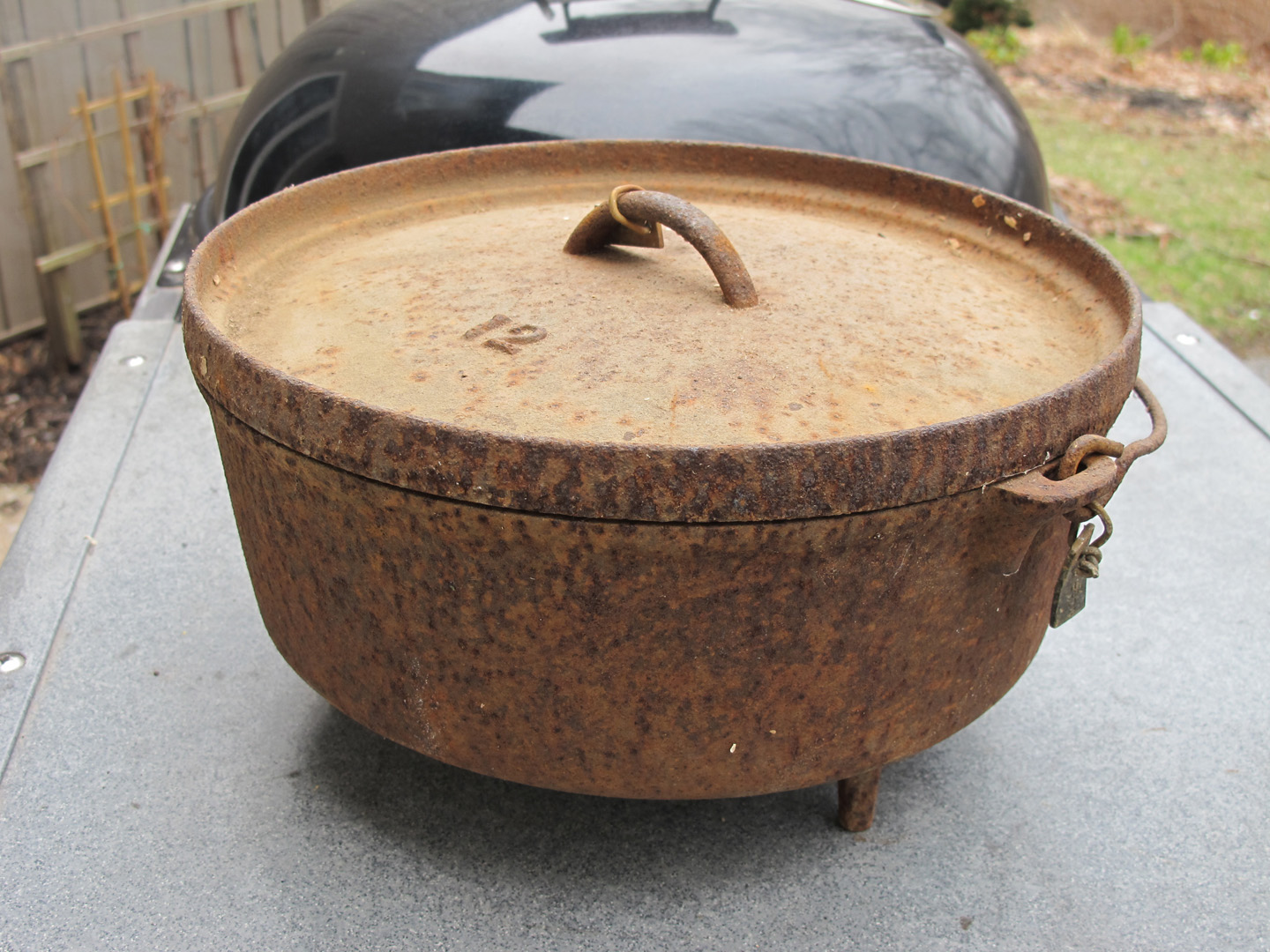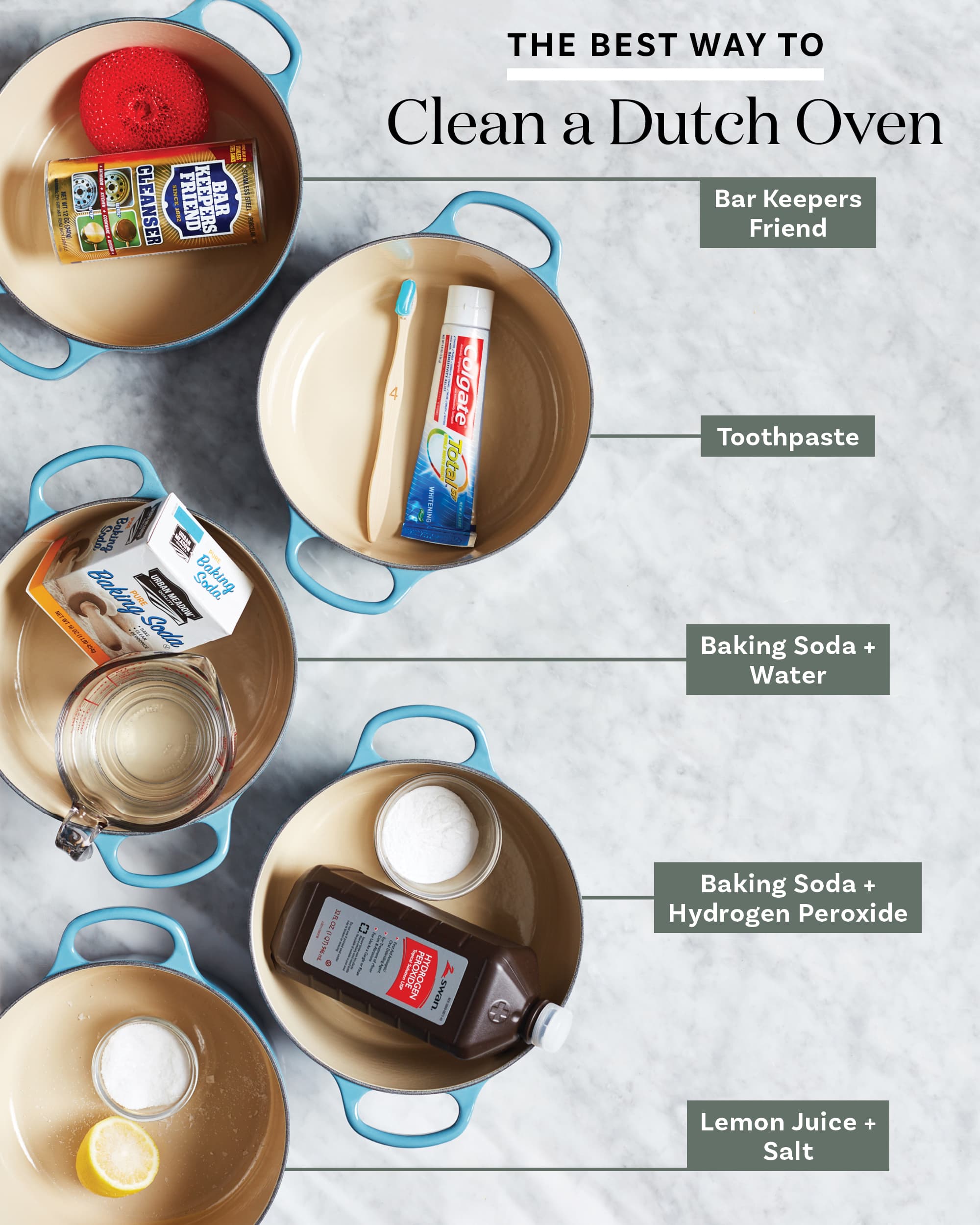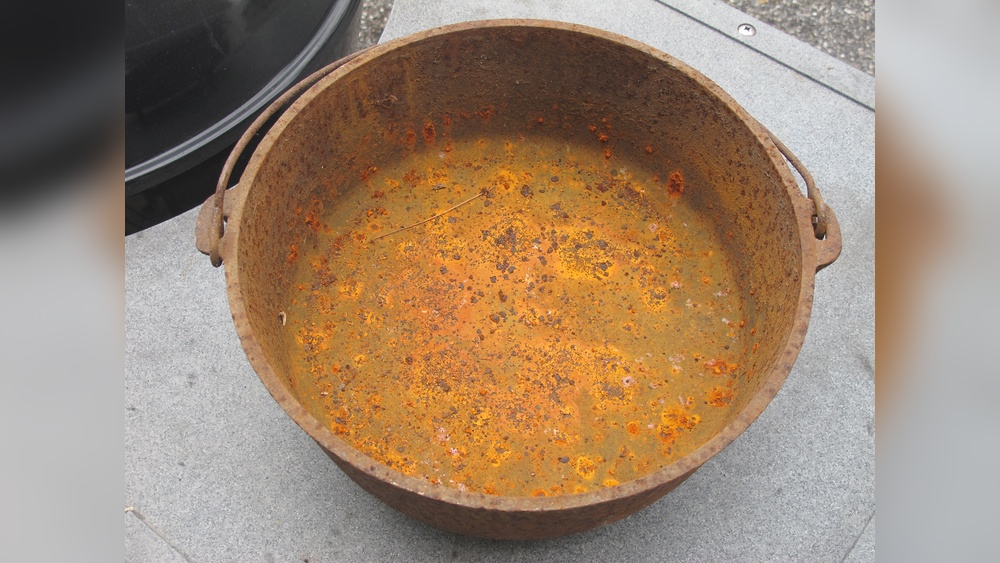If you own a cast iron Dutch oven, you know how durable and versatile it can be. But rust can sneak in if it’s not cared for properly, leaving you wondering how to bring your favorite cookware back to life.
You might think removing rust is complicated or that your Dutch oven is beyond saving—but that’s not true. In this guide, you’ll discover simple, effective steps to remove rust and restore your cast iron Dutch oven to its former glory.
By following these easy methods, you’ll protect your investment and keep your cookware performing perfectly for years to come. Ready to save your Dutch oven and keep cooking with confidence? Let’s dive in.
Identifying Rust Levels
Before removing rust from your cast iron Dutch oven, it helps to identify how much rust is present. Rust levels affect the cleaning method and effort needed. Knowing these signs makes the process easier and more effective.
Light Rust Signs
Light rust usually looks like small orange or reddish spots. These patches are shallow and spread over the surface. The texture may feel rough but not flaky. Light rust does not damage the metal deeply.
You can often remove light rust with gentle scrubbing. A soft brush or steel wool works well. Use warm, soapy water to help clean the spots. Baking soda paste can boost cleaning for stubborn areas.
Heavy Rust Indicators
Heavy rust appears as thick, flaky, or crusty layers on the Dutch oven. The rust may cover large areas or the entire surface. This type can cause pitting or pits in the metal. The surface may feel rough and uneven.
Removing heavy rust needs stronger methods like soaking in vinegar or using a rust remover. Scrubbing may require more effort and coarse tools. After cleaning, the Dutch oven might need re-seasoning to restore its protective coating.
Tools And Materials Needed
Removing rust from a cast iron Dutch oven requires specific tools and materials. Having the right items makes the process easier and more effective. Gather everything before starting to ensure a smooth restoration.
Cleaning Supplies
- Steel wool or a stiff brush to scrub rust
- Warm water for rinsing and soaking
- Mild dish soap to clean dirt and debris
- Baking soda to create a rust-removal paste
- White vinegar for soaking heavy rust
- Paper towels or lint-free cloths for drying
- Aluminum foil to protect oven racks during seasoning
Seasoning Oils
Seasoning your Dutch oven after rust removal protects it and improves cooking. Choose oils that withstand high heat and create a durable coating.
- Vegetable oil, common and easy to find
- Flaxseed oil, known for a strong seasoning layer
- Canola oil, a good alternative for seasoning
Removing Light Rust
Removing light rust from a cast iron Dutch oven is a simple task. It helps bring back the cookware’s smooth surface. Light rust usually appears as small orange or brown spots. These can be cleaned without heavy tools or harsh chemicals. Two effective methods are scrubbing with steel wool and using a baking soda paste.
Scrubbing With Steel Wool
Start by rinsing the Dutch oven with warm water. Use mild soap to remove dirt or grease. Take a piece of fine steel wool and gently scrub the rusty spots. Apply light pressure to avoid scratching the surface. The steel wool will lift the rust flakes away. Rinse the Dutch oven again to wash off any residue. Dry it completely with a cloth or paper towel. This method works well for thin rust layers that are easy to remove.
Using Baking Soda Paste
Mix equal parts baking soda and water to form a thick paste. Spread the paste on rusty areas with a soft cloth or sponge. Let it sit for 10 to 15 minutes. Baking soda helps break down rust without damaging the metal. After waiting, scrub the spots gently with a brush or sponge. Rinse thoroughly to remove all paste and rust particles. Dry the Dutch oven fully before storing. This approach suits light rust that needs a gentle cleaning boost.
Removing Heavy Rust
Removing heavy rust from a cast iron Dutch oven requires patience and the right technique. Heavy rust can damage the cookware if not treated properly. Using a vinegar and water soak is an effective method to break down rust quickly. This process loosens the rust, making it easier to clean and restore your Dutch oven.
Vinegar And Water Soak
Start by mixing equal parts white vinegar and water in a container large enough to hold your Dutch oven. Submerge the rusty parts completely in the solution. Let it soak for 1 to 4 hours, depending on how severe the rust is. Check the progress every hour to avoid over-soaking, which can harm the metal. After soaking, the rust will become softer and easier to remove with a scrub brush or steel wool.
Rinsing Thoroughly
After soaking, rinse the Dutch oven under warm running water. Remove all traces of vinegar and loosened rust particles. Use a scrub brush to clear any remaining rust spots gently. Make sure no vinegar or rust residue stays on the surface. A thorough rinse prevents further corrosion and prepares the cookware for drying and seasoning. Dry the Dutch oven completely to stop moisture from causing new rust.
Drying Techniques
Proper drying is crucial after removing rust from your cast iron Dutch oven. Moisture left on the surface can cause rust to return quickly. Use effective drying methods to protect your cookware and keep it in top condition.
Drying also prepares the cast iron for seasoning, which strengthens its non-stick layer. Two simple and reliable drying techniques include towel drying and heat drying on the stovetop.
Towel Drying
Start by wiping the Dutch oven with a clean, dry towel. Use a paper towel or a lint-free cloth for best results. Make sure to dry every part, including the lid and handles. Pay close attention to crevices where water can hide. This step removes most of the moisture quickly.
Towel drying is gentle and safe for cast iron. It reduces the chance of water spots and surface damage. Always use fresh, dry towels to avoid adding any dirt or fibers back onto the surface.
Heat Drying On Stovetop
After towel drying, place the Dutch oven on the stovetop over low to medium heat. Warm it for about 5 to 10 minutes to evaporate any remaining moisture. This step ensures the cast iron is completely dry inside and out.
Heat drying also helps open the metal’s pores for better seasoning. Avoid high heat that can damage the cast iron or cause warping. Keep a close eye to prevent overheating or burning.
Once dry, allow the Dutch oven to cool slightly before applying oil. This method effectively prevents rust and keeps your Dutch oven ready for use.

Credit: weberkettleclub.com
Seasoning The Dutch Oven
Seasoning the Dutch oven is essential after removing rust. It restores the protective layer. This process prevents future rust and improves cooking performance.
Proper seasoning creates a smooth, non-stick surface. It helps the cast iron last for years. Follow these steps carefully to achieve the best results.
Applying Thin Oil Coating
Use a clean paper towel to apply oil. Choose vegetable oil or flaxseed oil for best results. Cover every part of the Dutch oven inside and out. Apply a very thin, even layer of oil. Avoid thick or uneven coatings to prevent stickiness.
Removing Excess Oil
Take a fresh paper towel and wipe off extra oil. Keep only a light sheen on the surface. Excess oil can cause a sticky or uneven finish. Make sure the Dutch oven looks dry but shiny. This step is key for a smooth seasoning layer.
Baking In Oven
Place the Dutch oven upside down on the oven rack. Put aluminum foil on the lower rack to catch drips. Heat the oven to 350°F (175°C) and bake for one hour. After baking, turn off the oven and let the Dutch oven cool inside. This baking process bonds the oil to the cast iron. It forms the strong, rust-resistant coating needed for long-term use.
Maintaining Rust-free Cast Iron
Maintaining a rust-free cast iron Dutch oven ensures long-lasting performance and great cooking results. Proper care prevents rust from forming and keeps the surface smooth and non-stick. Simple habits can protect your cookware and save time on restoration later.
Proper Cleaning Habits
Clean your Dutch oven right after each use. Avoid soaking it in water for long periods. Use a soft brush or sponge with warm water to remove food residue. Skip harsh soaps or detergents that can strip the seasoning.
Dry the Dutch oven thoroughly with a towel immediately after washing. Heat it on the stove for a few minutes to remove any leftover moisture. A dry surface stops rust from developing and preserves the seasoning.
Apply a thin coat of cooking oil after drying. Rub the oil evenly inside and outside the pot. This layer protects the metal from air and moisture, which cause rust.
Storage Tips
Store your cast iron Dutch oven in a dry place. Avoid damp or humid environments that encourage rust formation. Keep the lid slightly ajar or place a paper towel inside to absorb moisture.
Never stack heavy items on top of the Dutch oven. This can damage the seasoning and cause chips. Use a shelf or cabinet space where the pot can rest safely without pressure.
Check your Dutch oven regularly for signs of rust or damage. Early detection allows easy cleaning and seasoning touch-ups. Proper storage habits keep your cast iron ready for cooking anytime.

Credit: www.zahradniterapie.cz

Credit: www.youtube.com
Frequently Asked Questions
How Do You Get Rust Off A Cast Iron Dutch Oven?
Scrub rust with steel wool and soapy water for light rust. Use baking soda paste for stubborn spots. Rinse, dry thoroughly, then apply a thin oil coat. Heat in the oven upside down to re-season and protect the Dutch oven.
Does Vinegar And Baking Soda Remove Rust From Cast Iron?
Vinegar and baking soda can help remove rust from cast iron. Soak briefly in vinegar, then scrub with baking soda paste. Rinse and dry thoroughly. Avoid prolonged vinegar exposure to prevent damage. Re-season the cast iron after cleaning to restore its protective coating.
What Should You Never Use To Clean A Cast Iron Dutch Oven?
Never use harsh detergents, metal scouring pads, or dishwasher to clean a cast iron Dutch oven. These damage its seasoning. Avoid soap and abrasive cleaners that strip the protective layer. Use gentle scrubbing with a brush or mild soap for safe cleaning.
How To Bring A Cast Iron Dutch Oven Back To Life?
Scrub rust with steel wool or baking soda paste. Rinse and dry completely. Apply a thin oil coat. Bake upside down in the oven to re-season.
Conclusion
Removing rust from your cast iron Dutch oven is simple with the right steps. Clean the rust thoroughly and dry the pot completely. Apply a thin layer of oil to protect the surface. Heat it gently to seal the oil and prevent future rust.
Regular care keeps your Dutch oven ready for cooking. Small efforts now save you from big repairs later. Keep your cast iron strong and useful for many years. Rust removal restores function and beauty in one go. Your Dutch oven will serve you well again.

